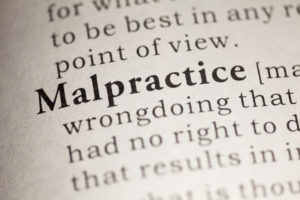Separate car accidents in rural western Virginia (VA) in January and February 2012 that claimed the lives of three teenagers are being attributed to young drivers who ran off the road accidently then overcorrected in a attempt to return all wheels to the pavement. Too often, overcorrecting forces drivers into the path of oncoming vehicles or propels them off the other side of the road.
Figures from the Virginia Department of Motor Vehicles cited in WSLS-TV 10 reports indicate 244 traffic accidents during 2011 involved teenage drivers who made overcorrections after somehow losing control of their vehicles. That total was up slightly from 235 in 2010. Overcorrection frequently occurs when drivers are distracted or speeding, and inexperienced drivers often make rushed, incorrect decisions.
As a car accident attorney, I’ve seen young, inexperienced drivers endanger themselves and others because of distractions including texting, calling and horsing around with passengers. Parents should talk with their teenagers about the risks of distractions behind the wheel and encourage kids to turn down their music, put the cell phone away, and always keep two hands on the steering wheel. Also, continue giving teens behind-the-wheel instruction even after they receive their licenses. The more experience teen drivers get, the better.
CD
About the Editors: The Shapiro, Lewis & Appleton personal injury law firm, which has offices in Virginia (VA) and North Carolina (NC), edits the injury law blogs Virginia Beach Injuryboard, Norfolk Injuryboard and Northeast North Carolina Injuryboard as pro bono services.










2 Comments
Harvey McFadden
Analyzing vehicle accident statistics, two things consistently stand out. One is the number of accidents in relation to the drivers’ age. It always graphs as a U shape where younger and older drivers have more accidents than middle age drivers. The other consistent concern is the fact that the number of accident is correlated to the weight distribution between the rear and front of a vehicle. The lighter the rear of a vehicle compared to the front, the more accidents are registered. The graph illustrates a sharp rise as a / shape, where for each percent weight reduction in the rear, there is an additional twenty fatalities per million of the same model car.
Consistently, there are 60 reported injuries for every one reported fatality and considering the fact that the most unbalanced car has 200 fatalities per million registered cars, the chances of an injury is (200x60=12000 divided by 1,000,000) or 1 in 84 as compared to other more balanced cars where the chances of injury is 1 in 340.
There are no balanced cars that have high fatality rates and no unbalanced cars with low fatality rates.
David Merian
This is so tragic. For parents or new drivers out there, here is a short video from All Star Driver Education, where I work, about how to SAFELY correct your vehicle if two wheels go off the road: http://captaindriversed.blogspot.com/2012/03/overcorrecting-and-running-off-road.html
I hope this can help educate teens (and adults) out there, so we have less of accidents out there. Also, thank you for emphasizing the importance of focused driving.
Thank you for sharing this story Emily Mapp Brannon.
Comments for this article are closed.